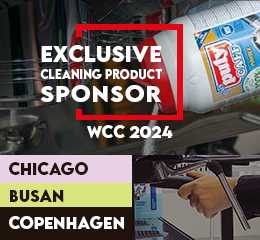Starbucks have begun reopening coffee shops around Australia’s biggest cities, eight years after closing down scores of stores owing to failed strategies.
The chain told News Corp on Friday that it had a new plan for success as it aims to be the most successful coffee chain in Australia, whereby the takeaway coffee market is worth about 2 billion Australian dollars (1.53 billion US dollars).
At present, the market is dominated by brands such as Gloria Jeans with more than 450 branches while Coffee Club has 350 outlets in Australia.
In comparison to Starbucks which only has a mere 22 outlets, a far cry from the 100 stores it operated when it first started in 2002.
Then, without warning, the world’s most successful coffee chain closed scores of stores in Australia.
Racking up losses of 143 million Australian dollars (109 million US dollars) on its Australian operations, in 2008, Starbucks sacked 700 staff and closed 66 branches leaving a rump of cafes in the central business district’s of Melbourne, Sydney and Brisbane mostly serving tourists familiar with the brand.
And that’s the way it stayed until recently when, with little fanfare, Starbucks opened new stores in Sydney and Brisbane.
Starbucks Australia chief executive Chris Garlick said the chain’s handful of stores had a “significant and loyal customer base” but its new cafes, far from being on every street corner, would be concentrated in a limited number of areas.
“Our growth strategy is centred around our customers preferences and where they want us to be, which includes shopping centres and high traffic tourist locations,” he said.
“We’re confident these locations will help us create destinations for customers who want to come to our stores and relax, spend time catching up with friends, or some quiet time alone.”
This is perhaps most evident with its next big move into Sydney’s northern beaches, a prime tourist destination, by Christmas.
Prof. Paul Patterson, from the University of New South Wales’ Business School, said Starbucks’ main problem first time round was that it fundamentally misjudged Australia.
“I don’t think it was much to do with the coffee, the problem was the brand,” he said.
“The Americans assumed that Australians would fall in love with an American brand and that just didn’t happen.”
“Australians are not anti-American but they are anti arrogant American brands,” he said.
Patterson said in Britain and China, with 800 and 2,000 outlets respectively, Starbucks were partly responsible for introducing coffee culture in countries where a nice cup of tea was the hot beverage of choice.
In Australia, however, independent coffee shops were already part of the culture.
“Starbucks failed to realize people were brand loyal to their local coffee shops because they know their barista and people weren’t going to leave that to go to a global brand,” Patterson said.
More than that, Starbucks charged a premium price.
A Starbucks tall latte currently at one of the few Sydney outlets costs 4.40 Australian dollars (3.4 US dollars) while a large flat white can be bought at funky holes in the wall nearby for 3.50 Australian dollars (2.67 US dollars).
The menu, heavy on US-style creamy sweet drinks and black coffee, only had a handful of milk-based coffees loved by Australians.
In 2014, the Withers Group, one of the country’s richest families bought the rights to the chain in Australia.
They already own the local arm of Japanese global convenience store franchise 7-Eleven which also sells coffee but for just 1 Australian dollar (76 US cents).
Withers Group’s then chief executive Warren Wilmot said the company had lofty ambitions for its new buy.
“Growing store numbers will be one of our primary opportunities,” Wilmot said at the time.
“Our aim will be to make Starbucks the most successful coffee chain in Australia.”
While its new expansion has been quiet, it’s not gone completely under the radar.
Residents in the Sydney beachside suburb of Manly almost spat out their chai lattes, so appalled were they at the idea of the US chain taking up residence in their suburb.
Earlier this week, Garlick told the Manly Daily that the company had changed and was now true blue.
“No doubt it’s going to take a little bit of time for people to understand it’s a global brand run by Australians in Australia.”
















